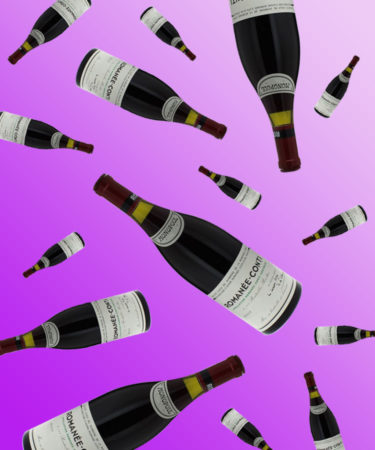
Arguably the world’s most important wine producer, in one of the most prestigious wine regions on the planet, Domaine de la Romanée-Conti’s bottles fetch unfathomable sums at auction.
The Burgundy producer (commonly referred to as simply “DRC”) is also among the world’s least accessible wineries. While all enthusiasts know of its fabled wines, very few will ever set eyes on a bottle, let alone taste one.
DRC produces between 6,000 and 8,000 cases annually. A search on wine tracking website Wine-Searcher.com shows the average price of “entry-level” Corton Grand Cru to be $1,878, while the legendary Romaneé-Conti Grand Cru averages $20,187 a bottle.
Of course, it’s not all quality fruit and investment-worthy bottles. From selfish princes, to multiple criminal plots, here are 10 things you should know about Domaine de la Romanée-Conti.
DRC releases eight different wines from eight different vineyards.
Unlike regions such as Bordeaux, Burgundy’s vineyards are commonly owned by multiple producers. In instances where wineries own an entire plot, the vineyards are called “monopoles.”
DRC owns two monopoles, Romanée-Conti and La Tâche. Both are planted entirely with Pinot Noir vines and considered among the best sites in Burgundy. DRC releases individual bottlings from these plots, as well as the six other vineyards it partially owns or leases. These include Richebourg, Romanée-St.-Vivant, Échezeaux, Grands Échezeaux, and Corton. DRC also owns a tiny section of the Montrachet vineyard, from which it releases a white (Chardonnay) wine.
All eight of these vineyards are Grand Cru sites, Burgundy’s highest classification.
Romanée-Conti is the jewel in the property’s crown.
As Wine-Searcher’s figures suggest, the Romanée-Conti vineyard is thought to produce DRC’s best wines. The quality of the 4.47-acre plot was identified as far back as the 13th century, when monks of the Saint-Vivant abbey first planted vines here.
The vineyard’s ownership has changed hands multiple times over the years and was first given the name “La Romanée” by the Croonembourg family in the 17th century (no one knows why). In the 18th century, the vineyard passed into the hands of Louis François, the Prince of Conti, who added his title to the second part of its name (his reasoning seems a lot more transparent).
The Prince of Conti didn’t like sharing.
When he bought the prestigious vineyard in 1760, the Prince of Conti took all its wines off the market, hoarding every bottle for his personal consumption. Despite having a reputation for throwing lavish Parisian parties, the prince refused to share the wines from the Romanée-Conti vineyard with even his closest friends.
Like many jewels, Romanée-Conti was once the subject of an elaborate criminal plot.
In January 2010, DRC’s co-director Aubert de Villaine received an envelope containing a worrying ransom message: If he didn’t hand over a million euros (approximately $1.1 million), the sender would poison the vines of DRC’s most prized vineyard. The French authorities eventually caught Jacques Soltys, the small-time criminal behind the plot, in a sting operation.
Imitation isn’t always a form of flattery.
DRC has also been subject to a number of high-profile imitation conspiracies. The case of Rudy Kurniawan is arguably the most notable. The Indonesian fraudster gained the nickname “Dr. Conti” after his love of — and prolific production of — numerous bottles of counterfeit fine wines, including DRC. The tale was documented in the 2016 movie “Sour Grapes,” and Kurniawan is currently serving a 10-year sentence in a U.S. prison.
Romanée-Conti may be its most expensive, but it’s not DRC’s most exclusive wine.
That honor goes to its Bâtard-Montrachet whites. The domaine owns a mere 0.42 acre of this vineyard and produces just two barrels from the plot. All of which is consumed exclusively at the domaine.
Speaking of exclusive…
In October 2018, DRC (twice) smashed the world record for the most expensive bottle of wine, after two bottles of 1945 Romanée-Conti sold for $558,000 and $496,000 at a Sotheby’s New York auction. The bottles were two of only 600 produced by the domaine in 1945, a notoriously difficult, but highly celebrated vintage.
Its vineyards lie on a UNESCO world heritage site.
In July 2015, the United Nations’ cultural arm granted “World Heritage” status to the climats (vineyards) of Burgundy’s Côte de Beaune and the Côte de Nuits regions. It followed a decade of research and lobbying lead by DRC co-director de Villaine.
“What is most important for me is that the people of Burgundy, especially the vignerons, be inspired by the ancient, precious, unique treasure they hold in their hands,” he said.
De Villaine hasn’t always been popular with his neighbors.
In 1976, de Villaine was one of the nine judges in the Judgment of Paris that saw California wines beat their French counterparts in a famous blind tasting. “Back home in Burgundy, I was considered a traitor,” he said in a 2015 interview with The New York Times. “But I was right. In the 1970s, we French thought we reigned supreme over the wine world. But much of our wine had become mediocre. This event gave us the kick in the pants we needed.”
Visiting the winery is, quite literally, a waste of time.
If you’re visiting Burgundy and are thinking of spontaneously dropping in on the property, don’t waste your time. The domaine only welcomes visitors with prior appointments, which it very rarely grants. Without one, you’ll find yourself waiting outside the property, on the ironically named rue du Temps Perdu (Street of Lost Time).
